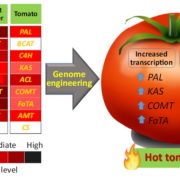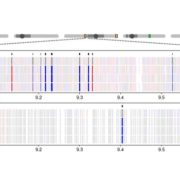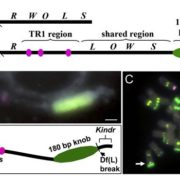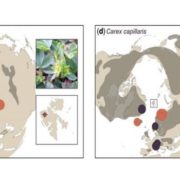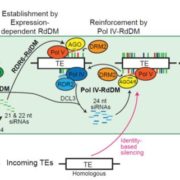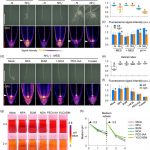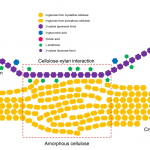Allelic variation of MYB10 controls natural variation in skin and flesh color in strawberry (Plant Cell)
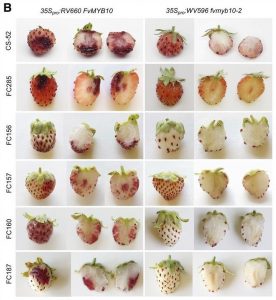 Few fruits have a more distinctive color than strawberry (Fragaria spp). Anthocyanins are responsible for strawberry’s characteristic red pigmentation with variations in receptacle color caused by altered anthocyanin levels. While the flavonoid synthesis pathway accountable for anthocyanin accumulation is well-characterized, a knowledge gap exists for the upstream network controlling this trait. Here, Castillejo et al. illustrate a simple system that controls natural variation in skin and flesh color in both diploid and octoploid strawberry. Quantitative trait loci mapping on an F2 population derived from a cross between white and red diploid accessions revealed that the MYB transcription factor MYB10 is the candidate gene for fruit color in strawberry. Subsequently, the authors investigated MYB10 allelic diversity in a geographically diverse ecotype panel. Three independent mutant alleles of MYB10 and a large chromosomal deletion were discovered that conferred the white fruit phenotype. A genome-wide association study in octoploid strawberry revealed anthocyanin biosynthesis to be activated primarily by an MYB10 copy- MYB10-2. A transposon insertion in the MYB10-2 promoter results in enhanced expression and thus anthocyanin accumulation in red fruit. MYB10 overexpression complemented the white fruit phenotypes of various accessions, making this gene a prime candidate for gene editing in strawberry. Finally, the authors developed markers to predict skin and flesh color that will likely facilitate molecular breeding in strawberry. (Summary by Caroline Dowling @CarolineD0wling) Plant Cell 10.1105/tpc.20.00474
Few fruits have a more distinctive color than strawberry (Fragaria spp). Anthocyanins are responsible for strawberry’s characteristic red pigmentation with variations in receptacle color caused by altered anthocyanin levels. While the flavonoid synthesis pathway accountable for anthocyanin accumulation is well-characterized, a knowledge gap exists for the upstream network controlling this trait. Here, Castillejo et al. illustrate a simple system that controls natural variation in skin and flesh color in both diploid and octoploid strawberry. Quantitative trait loci mapping on an F2 population derived from a cross between white and red diploid accessions revealed that the MYB transcription factor MYB10 is the candidate gene for fruit color in strawberry. Subsequently, the authors investigated MYB10 allelic diversity in a geographically diverse ecotype panel. Three independent mutant alleles of MYB10 and a large chromosomal deletion were discovered that conferred the white fruit phenotype. A genome-wide association study in octoploid strawberry revealed anthocyanin biosynthesis to be activated primarily by an MYB10 copy- MYB10-2. A transposon insertion in the MYB10-2 promoter results in enhanced expression and thus anthocyanin accumulation in red fruit. MYB10 overexpression complemented the white fruit phenotypes of various accessions, making this gene a prime candidate for gene editing in strawberry. Finally, the authors developed markers to predict skin and flesh color that will likely facilitate molecular breeding in strawberry. (Summary by Caroline Dowling @CarolineD0wling) Plant Cell 10.1105/tpc.20.00474



